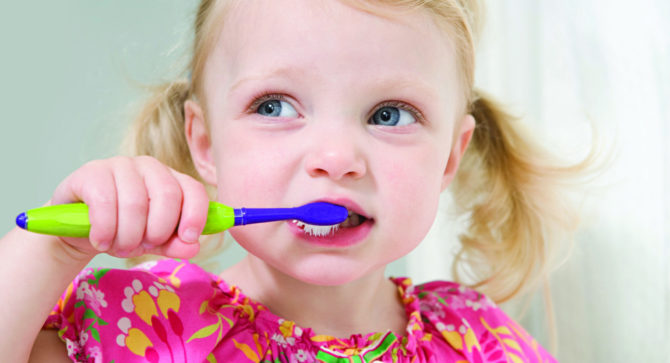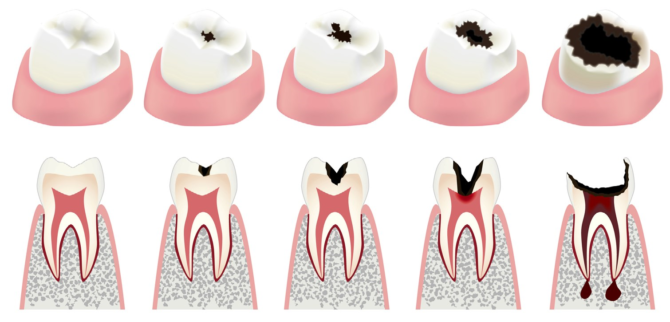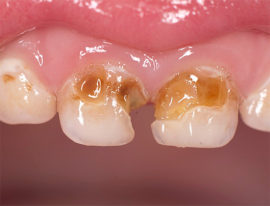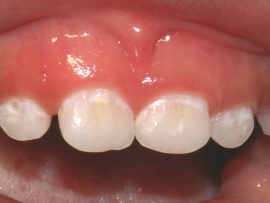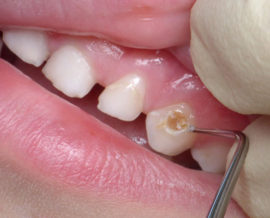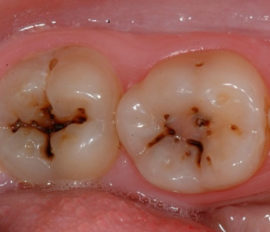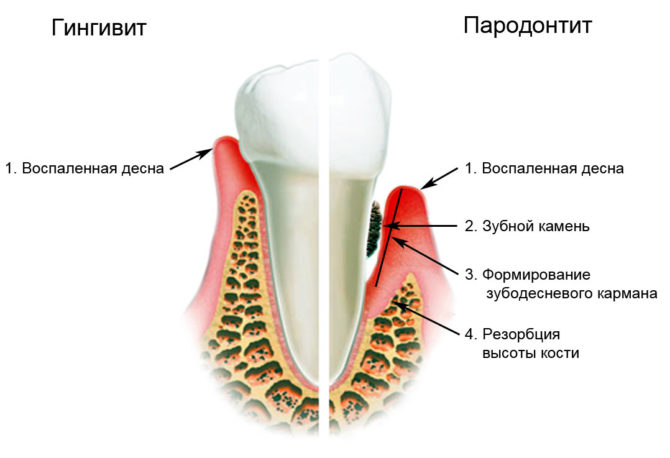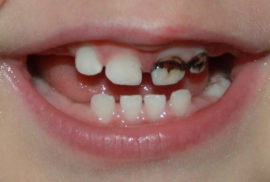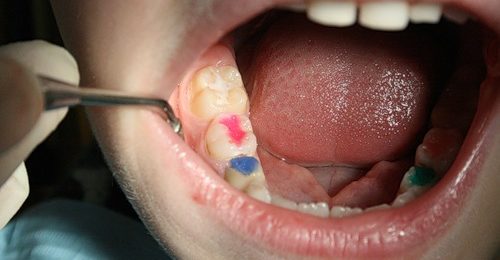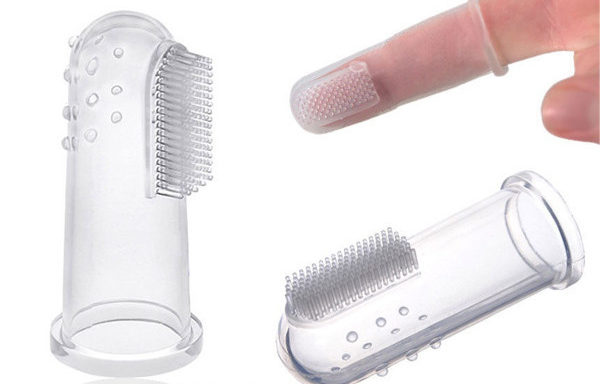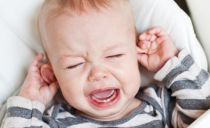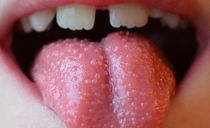Decay of deciduous teeth in young children: causes, symptoms, treatment options, prevention
In children, tooth enamel is thin and brittle, which makes it vulnerable. The carious process is developing very quickly. If he is not stopped in time, the baby will not have the most pleasant consequences. Premature removal of milk teeth threatens the underdevelopment of a permanent root and the formation of an incorrect bite. With proper oral care, decay of deciduous teeth in young children can be prevented.
Content
Pathology Features
Caries is a pathological process that affects the hard tissues of the tooth. Under the influence of various factors, the crown part is gradually destroyed. At the initial stages, obvious symptoms are practically absent, the child does not notice any discomfort. As caries develops, increased sensitivity and soreness appear.
Depending on the depth of destruction, the pathology is divided into several types:
- initial;
- superficial;
- average;
- deep.
The sooner treatment begins, the easier it is to get rid of the problem. Initial caries is characterized by damage only to the enamel surface, with deep damage of all layers of the external coating and dentin. A neglected disease is rarely correctable, and in this case the tooth has to be removed.
Caries on the front teeth of a child
The disease most often affects the anterior milk teeth, which is associated with the anatomical features of the structure of the children's dentition. Also there is such a thing as “bottle caries”, which is characterized by damage to only the front crowns. They are primarily in contact with sweet foods - juices and milk mixtures - which adversely affect the state of enamel. In the absence of treatment, the process progresses rapidly and begins to spread to neighboring teeth.
If caries in the front teeth of the child affects the cervical region, a circular type of pathology can be diagnosed. It begins on the frontal surface of the tooth in the neck, gradually covering the entire coronal part, which can result in a fracture of the affected area. It will be followed by inflammation of the nerve and removal is required.
Causes of caries in children
Often, dental caries begins in a child as early as 2 years old, immediately after the crowns begin to erupt. This can be triggered by various factors - from diseases carried by the mother to a lack of vitamins in the first months of an infant's life.
The following causes of caries in children can be distinguished:
- Genetics. If the parents have bad teeth, this can be transmitted to the child. Even with all the precautions, the child will suffer from diseases of the oral cavity.
- Pregnancy problems. Acute toxicosis in the initial stages of pregnancy deprives the mother body of useful substances, the fetus will also experience a deficiency. Improper nutrition of the expectant mother, taking medications, smoking, alcohol, diseases - all this stimulates tooth decay in young children.
- Baby disease. The body of very young children is very vulnerable. Even a mild cold significantly weakens the immune system, which affects the tooth tissue.
- Anatomy of temporary teeth. If there are gaps between the crowns, after eating, the remnants of food will accumulate between them. They become the cause of the formation of dense plaque, which is a breeding ground for the development and reproduction of bacteria.
- Inadequate oral hygiene. Not all parents know that cleaning should begin immediately after the appearance of the first tooth. This should be done after each meal, otherwise the crowns will quickly collapse. If older children refuse to brush their teeth twice a day, and parents do not pay attention to it - the development of carious cavities occurs very quickly.
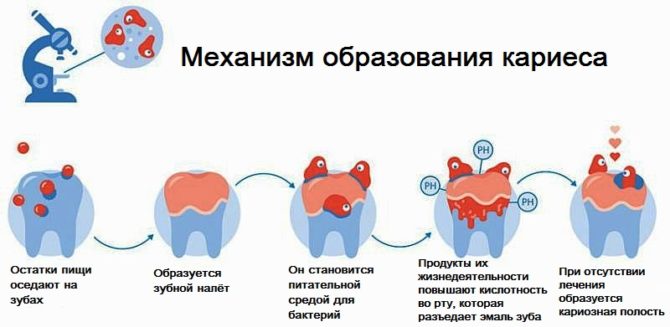
- Lack of vitamins and minerals. For enamel strength, calcium and fluorine are needed, which enter the children's body with food. The lack of these substances prevents the teeth from resisting the harmful effects of an acidic environment.
- Saliva. It is necessary to neutralize acid and alkali. It contains antibodies that cleanse the surface of the tooth from pathogenic microorganisms, which allows you to get rid of pathogenic microflora. But if saliva is too viscous or is excreted in insufficient quantities, the protective properties cease to work, and tooth decay occurs faster.
- Wrong diet. Soft foods usually contain a lot of carbohydrates, which greatly increases the risk of developing childhood caries. When eating hard foods, the teeth clean themselves. The abundance of sweets changes the composition of saliva, depriving it of its protective properties.
Visiting a pediatric dentist is advised immediately after the appearance of deciduous teeth. Regular visits are necessary for prevention and will prevent the development of diseases of the oral cavity.
While milk crowns appear, permanent teeth are formed. As they grow, they push out temporary ones, taking their place. If the process occurs under the influence of adverse conditions, and milk teeth fall out ahead of time, the main ones become vulnerable to diseases of the oral cavity.
Symptoms
Symptoms of caries are quite specific, but their parents can not always notice. The defeat often begins in places difficult to clean, which are difficult to see without special dental tools. Therefore, if there were no preventive visits to dentistry, a doctor is consulted only at the stage of deep caries.
Symptoms depend on the depth of the dentin lesion. The initial stage is called superficial caries. Faint yellowish spots appear on the enamel, different in size and shape. They do not cause discomfort to the child. Gradually, the formations become darker, becoming brown or black.
When the cavity goes deep into the enamel, the sensitivity of the tooth increases. The process of eating is accompanied by pain, there is a reaction to sweet or sour foods.
At the stage of secondary caries, acute pain appears during contact of the tooth surface with hot or cold. Food residues accumulate in the cavity and an unpleasant odor is added.
When the destruction reaches the nerve or root, pulpitis joins - the pain becomes sharper and is not associated with eating. Signs of intoxication may be observed:
-
migraine;
- digestive upset;
- a slight increase in temperature;
- weakness;
- nausea.
If the injured tooth is not treated, the crown part can completely collapse and lose its chewing function. In this case, removal is recommended.
Possible complications
At the initial stage, caries is not particularly dangerous, and it is quite simple to cure it. As the cavity deepens, the tooth becomes a source of infection. A slight decrease in immunity is enough to cause complications.
The following negative consequences are possible:
- otitis;
- sinusitis;
- chronic runny nose;
- tonsillitis;
- bone marrow and bone inflammation;
- periostitis of the periosteum.
The passage of infection deep into the soft tissues provokes gingivitis - inflammation of the gums, which gradually transforms into periodontitis. Gums become painful and friable, bleed and hold root worse. The lesion affects the tissues of neighboring healthy teeth, which affects their condition. If you do not start to be treated, the result will be loosening and tooth loss.
Treatment of decay of deciduous teeth in young children
The treatment of decay of deciduous teeth in young children is carried out exclusively in the dental clinic, it is impossible to do it yourself at home. For a young child up to three years, a visit to the doctor is a lot of stress, and it is almost impossible to explain to him that the doctor will simply cure a bad tooth.
In the treatment of caries in children 5 years of age and older, local anesthesia can be used. During the procedure, a special anesthetic gel is applied to the gum so that the child does not feel an injection with an anesthetic. If the baby is very small and cannot sit the whole process in the chair, it is recommended to use nitrous oxide - “laughing gas”, which does not harm the small body.
At the initial stage
The specialist should decide how to treat caries in children from 2 to 6 years old. If therapy begins at the spot stage, one of the painless firming procedures is possible.
The following treatment methods are used:
- ozone therapy;
- remineralization;
- silvering.
Ozone therapy does not require analgesia and does not affect the appearance of the teeth. This method is suitable for the treatment of caries in children under 3 years old. During the procedure, a small silicone bowl is attached to the tooth, through which ozone is supplied to the enamel. It makes the surface sterile in a few seconds, all the bacteria that cause the disease are destroyed. The tooth is treated with a firming compound.
Remineralization is advised for children of primary school age, if caries does not look very neglected. Such a procedure is suitable for preventing the development of caries on a “complex” surface with a large number of fissures - grooves that are difficult to clean on their own, which makes them a source of bacterial reproduction.
In the process of remineralization, special solutions are applied to the teeth with phosphorus, fluorine and calcium, which treat dentin. Electrophoresis, vacuum or ultrasound helps to increase effectiveness. The process does not last long, but at least four sessions must be done. The final decision on what to do with caries on baby teeth in a child is made only by a doctor.
Silvering is one of the most affordable and painless methods of treating caries in children 4 years of age and younger. The surface of the teeth is covered with a solution of silver, which has antibacterial properties and prevents the development of caries. The process has a significant drawback: the enamel is painted in a dark color, and it is impossible to get rid of the shade.
Therapy of moderate and severe caries
If the enamel is already destroyed and caries has penetrated the dentin, more serious procedures are necessary. A problem tooth needs deep processing, the most gentle way of correction is depophoresis. A solution of calcium and copper hydroxide is injected into the cavity, which allows you to clean and disinfect the dental canals.
As an alternative to depophoresis, preparation is used - the impact on the tooth with a powerful thin stream of water or a special liquid.
After cleaning, a “hole” is filled. For this, special materials are used - silicophosphate or glass-ionomer cements. Some clinics in large cities, for example, in Moscow, offer to make a special filling with fluoride. It gradually penetrates the tooth tissue and strengthens it.
The impact of the drill can be quite painful and long, so it is important to prepare the child for the procedure.It is necessary to explain to the baby why he will have to sit in a chair for a long time. Refuse from anesthesia is not worth it: it reduces stress from therapeutic manipulations, and the harm from it is minimal.
Preventative measures
Prevention of childhood caries should begin during pregnancy. The quality of the formation of tooth rudiments and their mineralization largely depends on the future mother. Unbalanced nutrition, lack of vitamins and minerals, diseases and severe toxicosis - all these factors disrupt the development of the baby’s future teeth.
To avoid the development of caries of the front teeth in the child, the mother needs to monitor her nutrition and after childbirth - during lactation. Any eaten product affects the quality and composition of breast milk. Maximum attention to the diet will help to avoid many problems with the child’s teeth in the future.
Teeth brushing should begin immediately after the appearance of the first incisor. To do this, there are special toothbrushes for the smallest. They are made of soft materials and come in the form of a fingertip. Wipe her teeth every time after eating.
By the age of four, the baby should already brush his teeth. Brushes for children of this age have soft bristles and can be of different shapes and colors. You need to take pasta for children - such products have a softer composition and are available with different tastes.
Parents need to ensure that their carbohydrate intake is lower. Foods high in their content provoke caries, as they are a good breeding ground for bacteria. Butter sweets should be replaced with hard fruits, which guarantee self-cleaning of teeth from plaque.
The best prevention of tooth decay is with visits to the dentist, who should be regular when they reach the age of five. Only a specialist should tell how to treat a child’s teeth at 2 years of age and later. The main thing is to start therapy at the initial stage of the lesion so that the harm from the disease is minimal.

